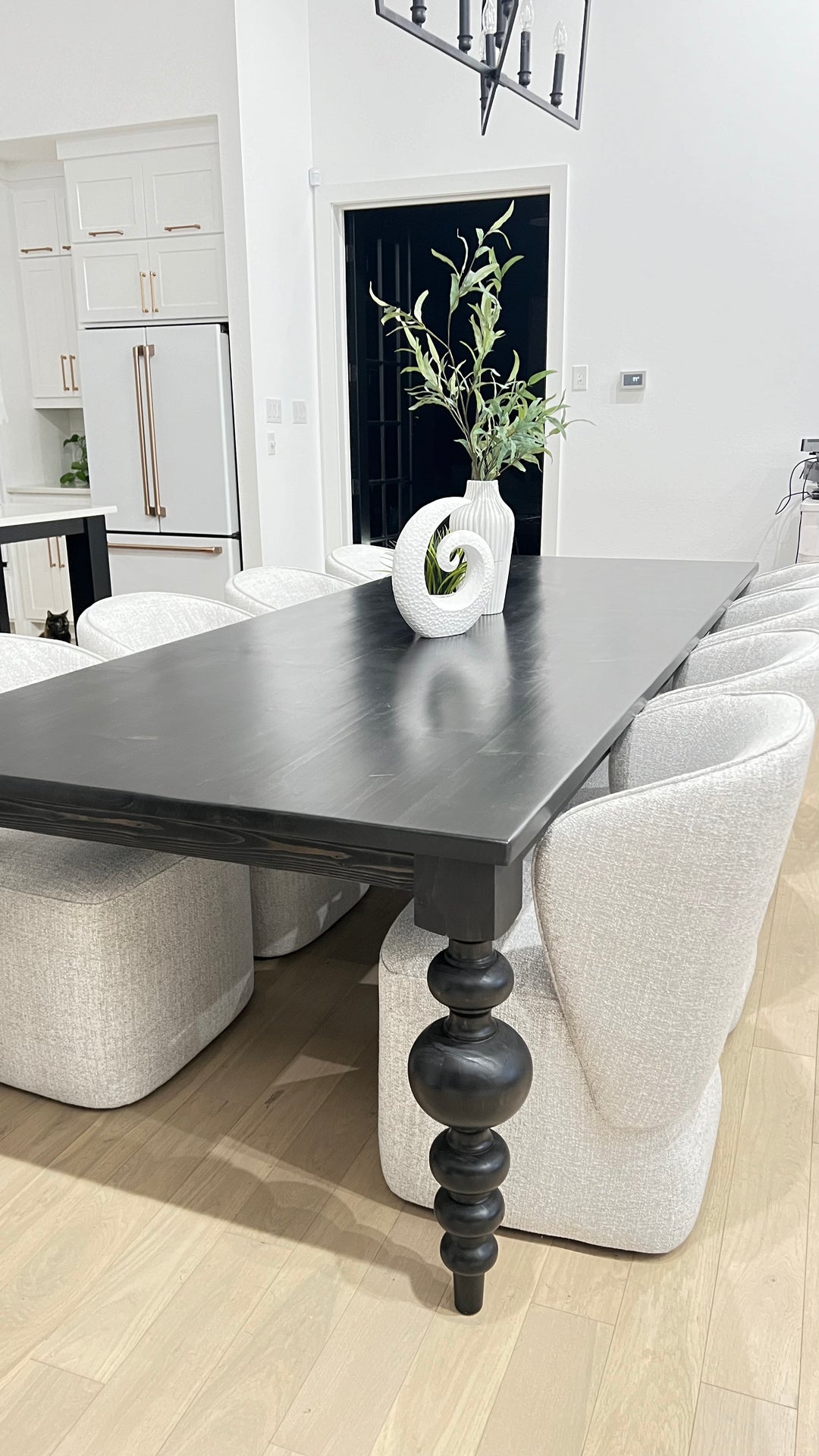How to Maintain and Care for Your Dining Room Table Legs
Expert Tips for Installing Eating Room Table Legs for Maximum Security
When it comes to installing dining space table legs, attaining maximum security is critical for both performance and aesthetic appeals. The process begins with selecting the ideal products and equipment, adhered to by careful alignment and consideration of weight distribution. Each action plays an essential role in making certain that the completed product stands up to daily usage without jeopardizing safety and security or design integrity. Nonetheless, understanding the nuances of these aspects can substantially affect the overall outcome. What details methods can boost security also additionally?
Choose the Right Legs
When picking the appropriate legs for your dining-room table, it is important to consider both performance and visual appeals. The legs you choose will substantially influence the general style and stability of the table. Review the table's intended usage; if you expect frequent events, stronger legs, such as those made from strong timber or metal, might be extra appropriate, as they provide enhanced longevity and support.
Next, consider the elevation and design of the legs in relation to the table top. Typical dining tables typically range from 28 to 30 inches in elevation, so make sure the legs line up with this standard for comfort. The design of the legs must complement the design of the table top-- whether it be contemporary, rustic, or conventional. For instance, conical legs can add a modern touch, while transformed legs may convey a much more classic visual.

Select Appropriate Equipment
Just how can the appropriate hardware improve the stability and durability of your dining-room table? The choice of ideal hardware is crucial to guaranteeing that the legs of your table are safely attached and able to withstand normal use. Premium screws, screws, and brackets offer the essential stamina to support the weight of the table, along with any kind of additional lots put upon it during meals or gatherings.
When picking screws, select those made from durable materials such as stainless steel or brass, which resist deterioration and preserve honesty in time. The size of the screws is just as essential; they ought to penetrate deeply right into the table's structure without compromising integrity. For bolted connections, think about making use of lock washers to avoid loosening as a result of resonance or motion.
In addition, making use of corner brackets can include added assistance, especially for larger tables or those with heavier tops. These brackets distribute weight equally and help preserve the table's form. Making certain that the hardware you choose is appropriate for the certain products of your table will additionally improve its total security and durability, allowing you to enjoy your dining experience for years to find.
Ensure Correct Positioning
Appropriate alignment of eating room table legs is crucial for both aesthetic appeal and useful stability. To achieve ideal placement, begin by determining the distance from the table's edges to the leg attachment points.
Use a level throughout installation to verify that each leg is perpendicular to the tabletop. It is recommended to note the other wanted leg settings on the bottom of the table with a pencil or covering up tape before securing them.
Additionally, verify the placement after the first screws are tightened up, as modifications might be necessary before totally protecting the hardware. By focusing on appropriate positioning, you not only enhance the table's general design yet also make sure that it continues to be steady and functional for years to come.

Consider Weight Circulation
After ensuring correct positioning of the dining room table legs, it is necessary to take into consideration weight circulation to enhance stability and functionality. dining room table legs. Correct weight distribution is crucial in stopping tottering and making sure that the table can sustain its desired tons without threat of tipping or falling down
When positioning the legs, ensure they are placed at equal distances from the facility of the table to uniformly disperse the weight throughout the structure. Think about the weight of the table top and any kind of things that will frequently rest on it, such as ornamental items or tabletop devices. Tables with heavier surface areas ought to ideally have legs positioned closer to the edges, as this makes the most of the base of support and lessens the risk of instability.
In addition, if the table is planned for use in a high-traffic area, take into consideration using larger materials for the legs or adding stabilizing components, such as cross-bracing or a lower rack - dining room table legs. These adjustments can assist keep balance and protect against shifting during use. Eventually, a well-considered weight distribution method will considerably improve the table's general performance, guaranteeing it remains a attractive and practical focal point for your dining space
Test Security Before Use
Examining the security of the dining space table before usage is a crucial action that needs to not be overlooked. If the table shows instability, recognize the legs or joints that might call for change.
Next, check that all screws and fasteners are tightened up correctly. Loose links can cause instability and possible damage with time. If essential, utilize timber glue on joints to boost stability, guaranteeing to allow appropriate drying out time.

Verdict
Finally, the installation of dining-room table legs calls for cautious consideration of materials, positioning, equipment, and weight circulation to attain optimum stability. By selecting strong legs and top notch fasteners, making sure accurate alignment, and distributing weight equally, the architectural honesty of you can try this out the table can be significantly improved. Performing a stability test prior to normal use even more makes sure that the table will stand up to daily pressures, consequently providing a dependable and secure eating experience.
When it comes to installing eating space table legs, attaining maximum stability is paramount for both functionality and visual appeals. The legs you select will substantially affect the total design and security of the table (dining room table legs). Typical dining tables normally vary from 28 to 30 inches in elevation, so make sure the legs line up with this requirement for convenience.Appropriate positioning of dining area table check that legs is crucial for both visual allure and useful stability.In conclusion, the setup of eating space table legs requires mindful consideration of products, weight, hardware, and alignment distribution to achieve maximum security